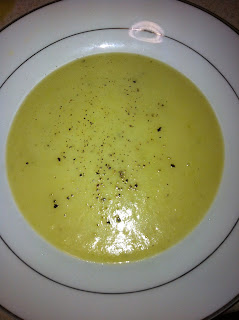I touchdown in Iceland in exactly 12 days. I haven't had a vacation (a real one) since the last time we were in Iceland two years ago, so I am really looking forward to this one. They say that when you're on vacation you gain weight. Depending on what you're doing, of course. For example, the average person on a cruise ship gains a pound a day. To prepare for this vacation, I'm going to do 12 days of Healthy. It's like the 12 days of Christmas, but with diet and workout tips instead of milking maids and golden rings.
I have never made an artichoke before, but they are very good for you. They are high in antioxidants, in fact they contain more antioxidants than most vegetables. They are good for the liver and have even been found to regenerate liver tissue. Artichokes help the digestive system. They are a natural diuretic, they aid digestion, improve gallbladder function and, as mentioned above, they are of great benefit to the liver. Wait - there's more! Ingredients in artichoke leaves have been shown to reduce cholesterol. They raise good cholesterol (HDL) and lower bad cholesterol (LDL). These bad boys are also high in fiber! One large artichoke contains a quarter of the recommended daily intake of fiber. A medium artichoke has more fiber than a cup of prunes.
Let's get started...
Ingredients:
4 whole large artichokes
2 lemons, halved
4 cloves garlic, peeled, left whole
4 tbsp olive oil
1 tsp salt
Preparation for Roasting:
If the artichokes have little thorns on the end of the leaves, take a kitchen scissors and cut of the thorned tips of all of the leaves. This step is mostly for aesthetics as the thorns soften with cooking and pose no threat to the person eating the artichoke.
Using a serrated knife, cut the artichoke off 1-inch of the top. Quickly rub each artichoke with a cut lemon so they don't discolor. Pull off any smaller leaves towards the base and on the stem.
The stem can be done two ways. You can cut the excess stem, leaving up to an inch on the artichoke. The stems tend to be more bitter than the rest of the artichoke, but some people like to eat them. Alternatively you can cut off the stems and peel the outside layers which is more fibrous and bitter and cook the stems along with the artichokes. For my dinner, I am going to completely cut off the stem of the artichoke where it meets the base. Rinse the artichokes in running cold water.
Tear off 4 large square pieces of heavy-duty foil. Rub a few drops of olive oil on the foil and place an artichoke stem side down. Stick a clove of garlic into the center and push down an inch or so. Sprinkle over 1/4 tsp of salt. Drizzle 1 tbsp olive oil over the top. Finish by squeezing the half lemon over the top. The lemon juice will "wash" the salt and olive down in between the leaves. Gather up the corners of the foil and press together on top to tightly seal the artichoke (like a chocolate kiss). You can wrap in a second piece of foil if you don't think you have a tight enough seal.
Repeat with the other artichokes. Place in a roasting pan and bake at 425 degrees F. for 1 hour and 30 minutes. Let rest for 20 minutes before unwrapping and serving. Can be eaten hot, warm, or chilled.
Make it another way:
Follow instructions above all the way to the part where you rinse them in cold water. In a large pot, put a couple inches of water, a clove of garlic, a slice of lemon, and a bay leaf (this adds wonderful flavor to the artichokes). Insert a steaming basket. Add the artichokes. Cover. Bring to a boil and reduce heat to simmer. Cook for 25 to 45 minutes or until the outer leaves can easily be pulled off. Note: artichokes can also be cooked in a pressure cooker (about 15-20 minutes cooking time). Cooking time depends on how large the artichoke is, the larger, the longer it takes to cook.
How to Eat an Artichoke:
Artichokes may be eaten cold or hot, but I think they are much better hot. They are served plain or with a dip, either melted butter or mayonaise. I did plain and I gave my sous chef fat-free mayo with a little bit of balsamic vinegar mixed in.
First, pull off outer petals, one at a time. Dip white fleshy end in melted butter or sauce. Tightly grip the other end of the petal. Place in mouth, dip side down, and pull through teeth to remove soft, pulpy, delicious portion of the petal. Discard remaining petal. Continue until all of the petals are removed.
With a knife or spoon, scrape out and discard the inedible fuzzy part (called the "choke") covering the artichoke heart. The remaining bottom of the artichoke is the heart. Cut into pieces and dip into sauce to eat.
Today's workout tip is.... HILLS!
If you run or bike or walk for cardio, you’ll want to incorporate hills (after the first month or two of doing it at an easy pace on flat ground). These will make you stronger and make your limited workout time even more effective. Take them easy at first, but once you’re used to hills, you can get a good pace going. Either use a hilly route or do repeats on one hill. I find that there are some really challenging hill courses on the elliptical and bikes in the gym. Scroll through and find the ones that best challenge you. You'll notice you feel the burn in your legs more AND you burn more calories. Yeah, buddy!













































